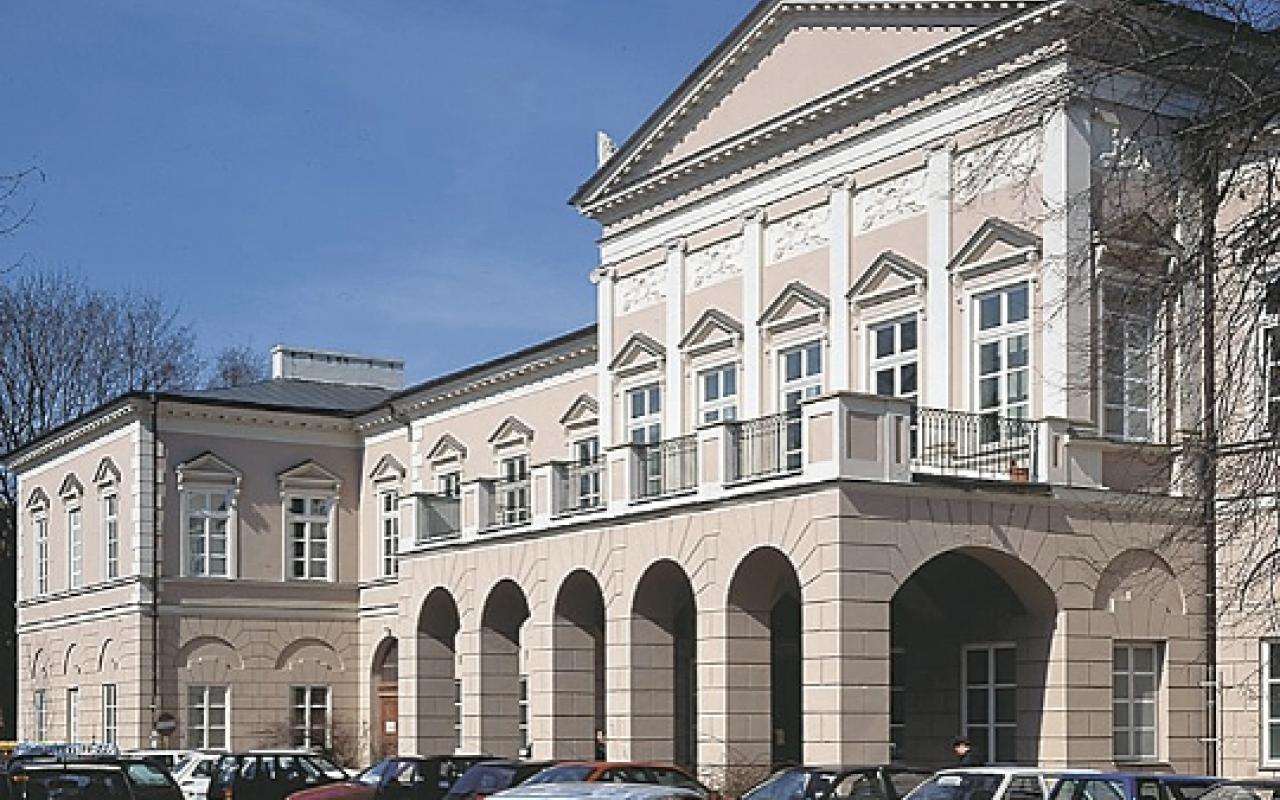Палац Любомирських (Люблін)
Перша згадка про маєток на цій території датується XVI століттям. Будівля була зведена для потреб родини Фірлеїв.
Address:
Radziwiłłowska 11, 20-400 Lublin
The first record of the palace dates back to the 16th century. The building was erected for the needs of the Firlej family. In the following century it was taken over by the Ostrogski family and then by the Lubomirski family. At the end of the 17th century it was rebuilt in the Baroque style according to a design project by Tylman van Gameren. Then it was a one-storey building with a high roof, dormer windows and gazebos.
In 1722 the owner of the estate changed again. It was Duke Pawel Karol Sanguszko who received it as a dowry thanks to his marriage to Marianna from the Lubomyrski family. Since the main residence of the couple was in the town of Lubartów, almost no one lived in the Lublin palace. The building was slowly declining.
In 1779 the palace came into possession of the Szeptycki family. In 1801, the building was bought at an auction by the President of Lublin and used for the city needs. After the renovation and reconstruction, performed according to the design project of Jan Stompel, the building was intended to serve as a military hospital, and then as a seat of the Lublin Province Committee.
After the fire in 1829, it was rebuilt again, this time according to the design project of Henryk Marconi, who recreated the building in Neo-Renaissance with elements of Empire style. In this shape the palace has been preserved to this day.
In the second half of the 19th century it housed the Russian governor and since 1915 the Austrian occupation authorities.
In 1918 the estate made a centre on struggle for independence. On the night between 6 and 7 November the government of the Polish People's Republic was formed headed by Ignacy Daszyński. The main hall of the Palace is named after him.
After World War II, the building was given to the Maria Curie-Skłodowska University and made a seat of the Political Sciences Faculty. In 2017 the palace was purchased by the Ministry of Culture and National Heritage of the Republic of Poland for the purpose of creating the Museum of the Eastern Lands of the Old Republic of Poland.
Catering:
MANDRAGORA (in the Old Market Square, 9, Rynek Str., Lublin).
CARDAMON (41, Krakowskie Przedmieście, Lublin).
BOSKO Cafe (4 Krakowskie Przedmieście, Lublin).
MAGIC in the Old Town (2, Grodzka Str., Lublin).
PERŁOWA BEER DRINK (15A, Bernardyńska Str., Lublin).
16 STOŁÓW in the Old Town (16/1, Rynek Str., Lublin).
ĄKA (12, Marii Skłodowskiej Curie Str., Lublin).
LA TRAVIATA (16, Chopina Str., Lublin).
STÓŁ I WÓŁ in the Old Town (2-6, Bramowa Str., Lublin).
RED ROCK CITY (3, Marii Skłodowskiej Curie Str., Lublin).
ZIELONY TALERZYK (3, Królewska Str., Lublin).
Accommodation:
IBB Grand Hotel Lublinianka (56, Krakowskie Przedmieście, Lublin).
Hampton By Hilton Lublin (1, Kompozytorów Polskich Ave., Lublin).
LUBHOTEL (located in Lublin, 3.5 km from the Sobieski Palace at 107 Krańcowa Street).
Hotel GRODZKA 20 (located in the Old Town of Lublin).
Ibis Styles Lublin (Old Town, 7 Solidarności Ave, Lublin).
Hotel Atelia 175, Warszawska Ave., Lublin).
Apartments Centrum RS SUITES (12/1, Kowalska Str., Lublin).
Rodmos Hostel (8/4, 3-Maja Str., Lublin).




